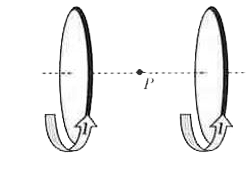Two tower are built on the hill 50 Km apart and then joining them passes 30 m above a hill halfway in between. What is the longest wavelength of radiowaves which can be sent between the toers without serious diffraction effects ?
The correct Answer is:0.036 m
Topper's Solved these Questions
Similar Questions
Two towers on top of two hills are 40km apart. The line joining them passes 50m above a hill halfway between the towers. What is the longest wavelength of radio waves, which can be sent between the towers without appreciable diffraction effects ?
View SolutionTwo towers on top of two hills are 40 km apart. The line joining them passes 50 m above a hill halfway between the towers. What is the longest wavelength of radio waves, which can be sent between the towers without appreciable diffraction effects ?
View Solution
Knowledge Check
Two towers on the top of two hills are 40 km apart. The line joining them presses 50 m above a hill half way between the towers. What is the longest wavelength of radiowaves which can be send between the towers without apprecialbe fiffraction effects?
A1.25 mB0.125 mC2.50 mD0.250 mTwo loops carry equal currents I in the same direction. They are held in the positions shown in the figure and project above and below the plane of the paper. The point P lies exactly halfway between them on the line that joins their centers. The centers of the loops and the point P lie in the plane of the paper. Which one of the figures below shows the position of a compass needle if the compass were placed in the plane of the paper at P ?
 A
A B
B C
C D
D
There are three runners Tom, Dick and Harry with their respective speeds of 10 km/h, 20 km/h and 30 km/h. They are initially at P and they have to run between the two points P and Q which are 10 km apart from each other. They start their race at 6 am and end at 6 pm on the same day. If they run between P and Q without any break, then how many times they will be together either at P and Q during the given time period?
A5B7C4D12
Two towers on the top of two hills are 40 km apart. The line joining them presses 50 m above a hill half way between the towers. What is the longest wavelength of radiowaves which can be send between the towers without appreciable diffraction effects?
View SolutionTwo towers on top of two hills are 40km apart. The line joining them passes 50m above a hill halfway between the towers. What is the longest wavelength of radio waves, which can be sent between the towers without appreciable diffraction effects ?
View SolutionIn a double slit experiment, the distance between the slits is 5.0 mm and the slits are 1.0m from the screen. Two interference patterns can be seen on the screen one due to light with wavelength 480nm, and the other due to light with wavelength 600nm. What is the separation on the screen between the third order bright fringes of the two intergerence patterns?
View SolutionIn a double slit experiment, the distance between the slits is 5.0 mm and the slits are 1.0m from the screen. Two interference patterns can be seen on the screen one due to light with wavelength 480nm, and the other due to light with wavelength 600nm. What is the separation on the screen between the third order bright fringes of the two intergerence patterns?
View SolutionIn conventional television, signals are broadcast from towers to home receivers. Even when a receiver is not in direct view of a tower because of a hill or building, it can still intercept a signal if the signal diffracts enough around the obstacle, into the obstacle's "shadow region." Previously, television signals had a wavelength of about 50 cm, but digital television signals that are transmitted from towers have a wavelength of about 10 mm. (a) Did this change in wavelength increase or decrease the diffraction of the signals into the shadow regions of obstacles? Assume that a signal passes through an opening of 6.0 m width between two adjacent buildings. What is the angular spread of the central diffraction maximum out to the first minima) for wavelengths of (b) 50 cm and (c) 10 mm?
View Solution
